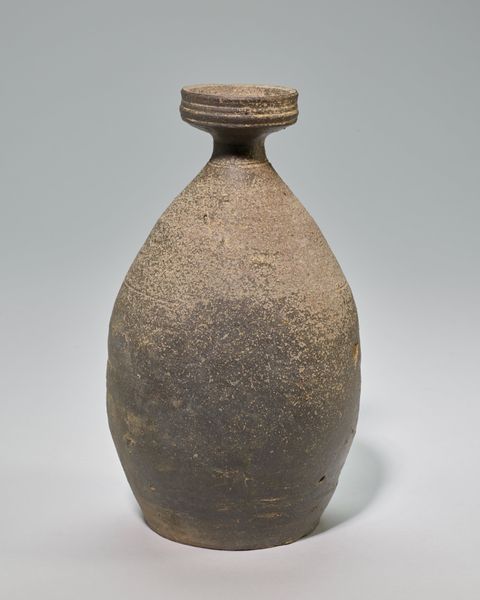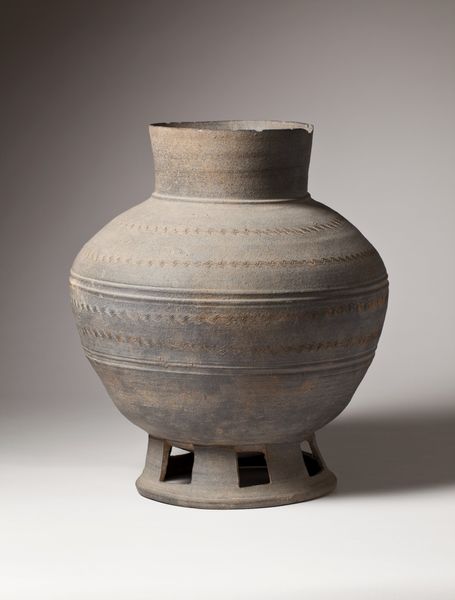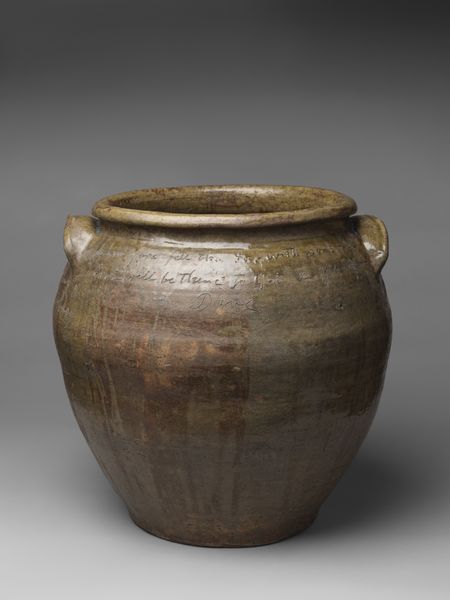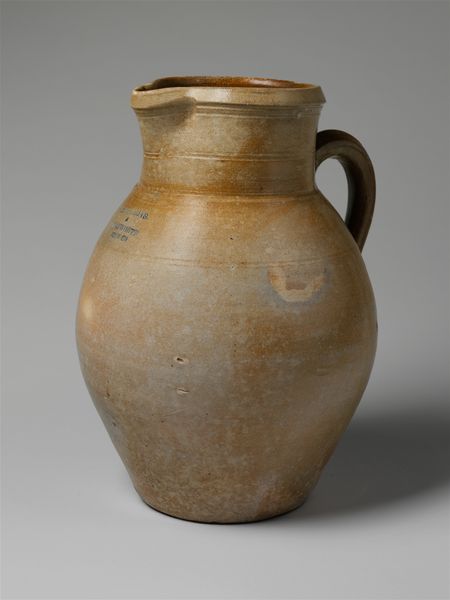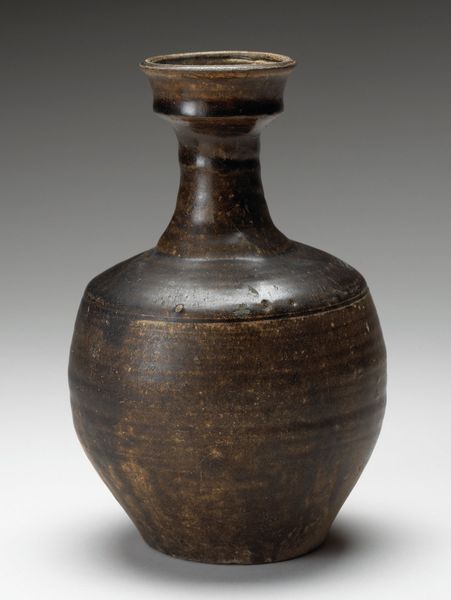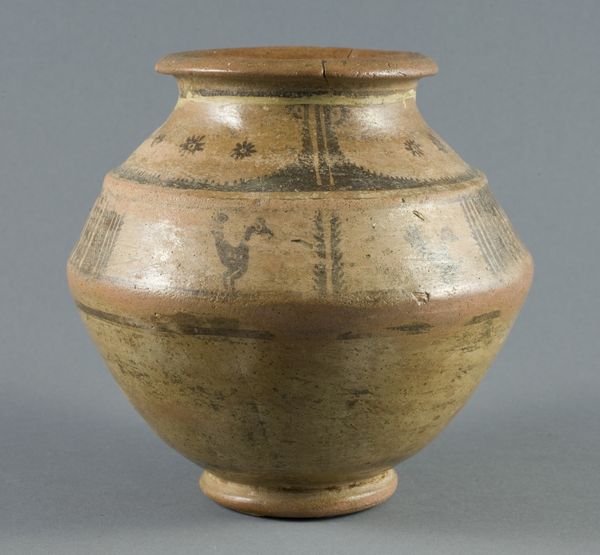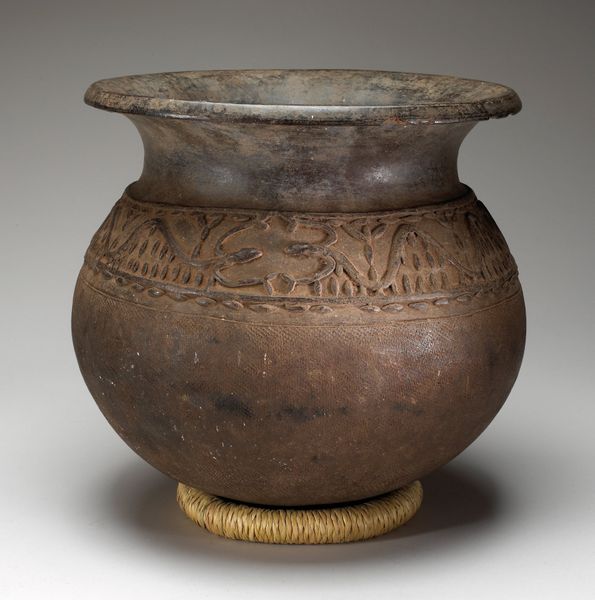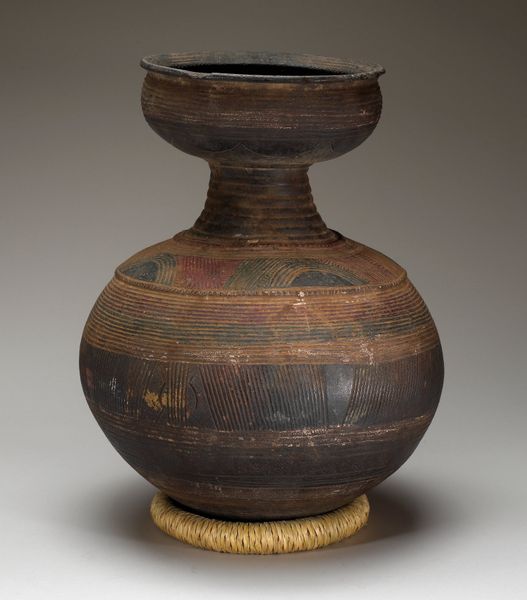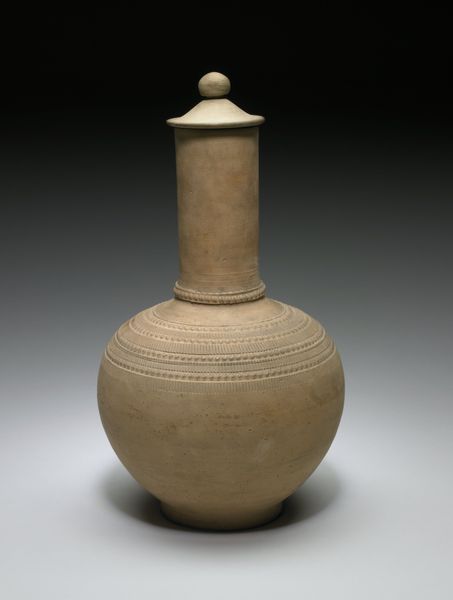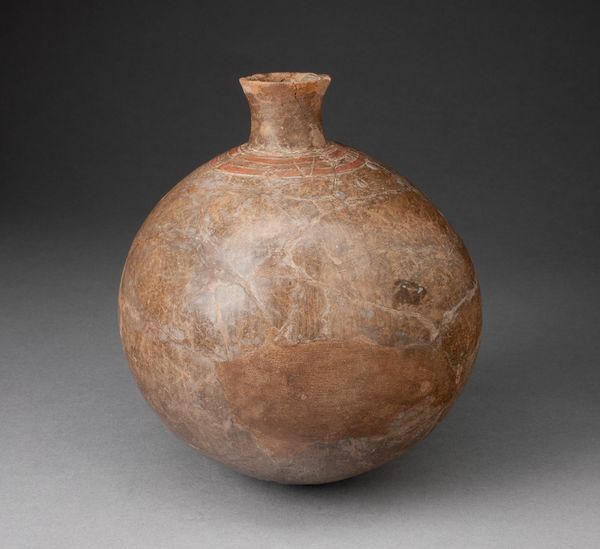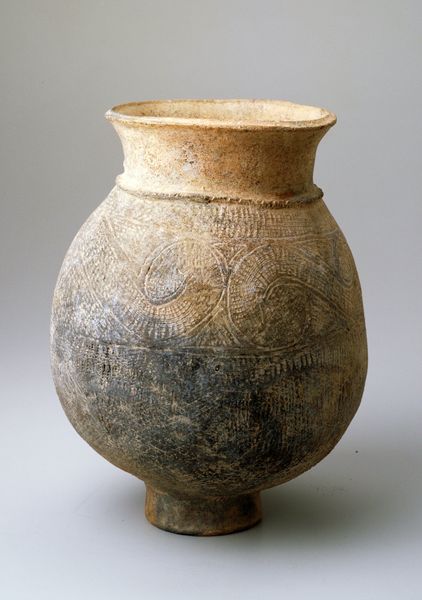
ceramic, earthenware
#
ceramic
#
form
#
earthenware
#
geometric
#
ancient-mediterranean
#
ceramic
Dimensions: 8 9/16 x 8 5/16 x 7 5/8 in. (21.75 x 21.11 x 19.37 cm)
Copyright: Public Domain
Editor: Here we have an ancient, anonymous jar dating from the 2nd century, made of earthenware. The surface is quite rough, but I find its shape harmonious and the textures surprisingly modern. How do you approach a piece like this, with its focus on pure form? Curator: I'm drawn to the interplay of geometric volumes and the rhythm created by the decorative bands encircling the neck. Note how the spherical body rests on a flared base, achieving a satisfying balance. One might say that it’s about the object and how the forms contrast, and complement, each other. Editor: Yes, the balance is beautiful. What do you think the material adds to the overall impact? Curator: The ceramic, with its muted tone and tactile quality, amplifies the object’s simplicity and timelessness. This unadorned material directs our focus to the vessel’s architecture: the curve of its belly, the tapering neck, and the subtle ornamentation of its surface. In many ways it distills the idea of "vessel" down to its elemental components. What would you say is the effect of the three symmetrical cut-outs on the flared base? Editor: Good question! Perhaps they play with the sense of groundedness versus airiness. It introduces negative space to that otherwise quite grounded section of the piece. It certainly gives us pause. I suppose a Formalist reading keeps the meaning internal to the art object itself, huh? Curator: Precisely. The jar provides an opportunity to explore the essence of form and material. Ultimately, it prompts a consideration of what constitutes a satisfying artistic design and its lasting impact on our senses and sensibilities. Editor: I appreciate seeing how the dialogue of different shapes, textures, and use of positive and negative space leads to understanding.
Comments
minneapolisinstituteofart almost 2 years ago
⋮
This elegant, thin-walled jar is an early example of wheel-turned pottery in Korea. Before this technological advancement, vessels were built by rolling ropes of clay and coiling them on top of each other to create a container. Since such jars, with their flaring necks, round bottoms, and unusual handles in the shape of ox horns, have only been discovered among funerary remains, it is likely they once held ceremonial offerings.
Join the conversation
Join millions of artists and users on Artera today and experience the ultimate creative platform.

